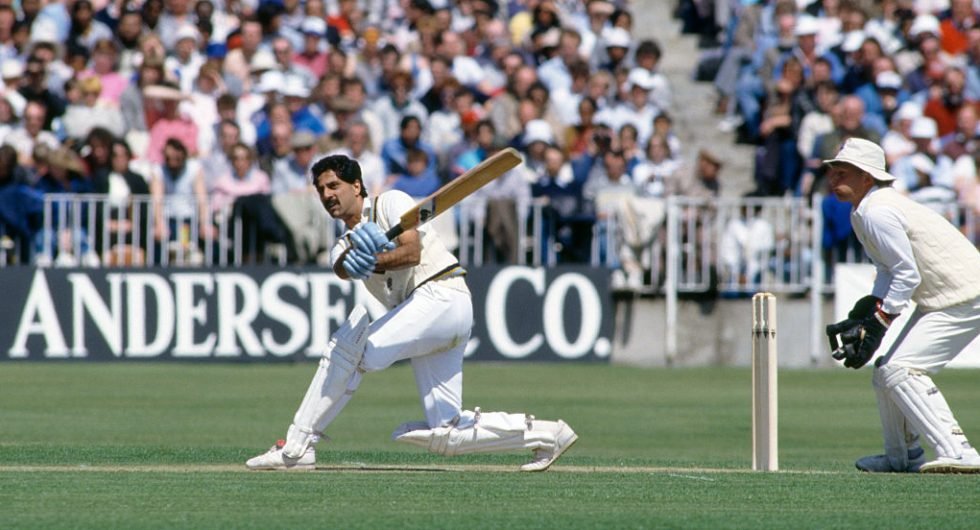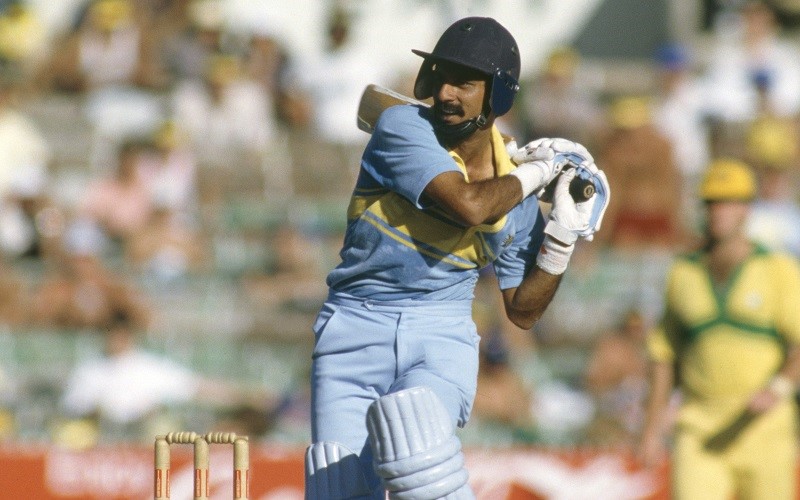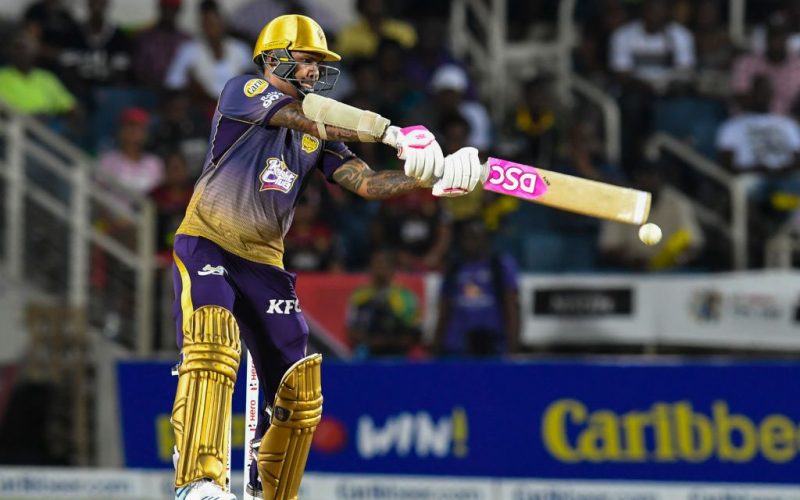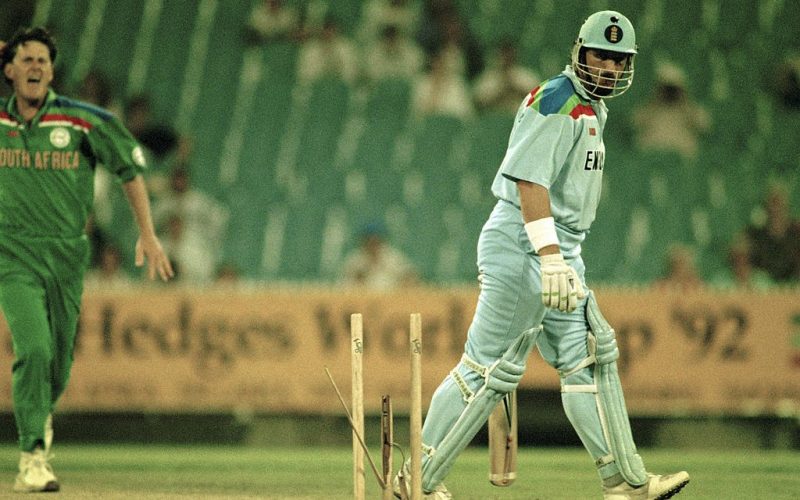The best and worst pinch hitters

 by James Wallace
by James Wallace
@Jimbo_Cricket 5 minute read
First published in the inaugural issue of the Pinch Hitter, James Wallace lists his selection of the best and worst… pinch hitters.
The Best
Kris Srikkanth
Srikkanth was the original outlier at the top of the order. Anachronistically aggressive, dispatching the great and good of fast bowling in such an insouciant manner it’s a wonder that none of them plopped a fist through his open-grilled helmet. Look up either of his Test tons (don’t tell me you don’t have the time). In smiting 116 against the Aussies at the SCG in 1986 he makes opening partner Sunil Gavaskar look like just ‘some bloke’ at the other end.

Kris Srikkanth in action during the 1985/86 Benson and Hedges Cup in Australia
Not one for consistency, Srikkanth found himself in and out of the Indian side and was the embodiment of the Neil Young line, “Better to burn out than to fade away”. He can be seen in the early nineties during one of his final ODI knocks, sans helmet, flicking Patrick Patterson over his head for one of the most gratifying sixes you could hope to see. Some might argue that he isn’t a true ‘pinch hitter’ because he was always an opener, but there is no doubt he blazed a trail for others to follow.
Mark Greatbatch
Greatbatch was plucked from relative middle-order obscurity by his old mate and then Kiwi captain Martin Crowe during New Zealand’s run to the 1992 World Cup semi-finals. After regular opener John Wright pulled up lame on the eve of their third match, the thick-set Aucklander with the walrus moustache – out of nick and with no pedigree as an opening batsman – seized his opportunity, racing to a 60-ball 68 against South Africa. In the days when scoring at four runs an over in a 50-over match was considered a good lick, Greatbatch’s lusty heaving was an unprecedented slobber.
It wasn’t against shoddy bowling either. The rapid Allan Donald was ‘dis’batched’ just as readily as Marshall, Ambrose and Kapil Dev as Crowe’s side cruised to the last four, where they succumbed to eventual winners Pakistan. It’s no overstatement to say Greatbatch changed the game.
Sanath Jayasuriya
Originally thought of as more of a bowler, the Sri Lankan’s judder-man off-breaks did eventually earn him 440 international wickets. But when you see the name of Jayasuriya, it’s batting pyrotechnics you think of. With his top-order assaults more destructive than a tickled tiger in a tea chest, the dashing left-hander lit the touch paper on Sri Lanka’s innings time and again.
After Greatbatch had shown the way in ’92, teams around the world looked to emulate the Kiwi tactic and begin the innings with a blitzkrieg. But not every team had a Jayasuriya languishing in the lower middle-order.
#OnThisDay in 1996, Sanath Jayasuriya smashed an ODI fifty off only 17 balls against Pakistan in Singapore!
It was the world record for the fastest ODI fifty before AB de Villiers bettered it with a 16-ball half-century in 2015. pic.twitter.com/9UrEW38sbB
— Wisden (@WisdenCricket) April 7, 2020
He never looked back after being promoted to open, spraying the skies and stands with fours and sixes for the next decade or more. With the stylish but more mercurial Romesh Kaluwitharana for company, captain Arjuna Ranatunga encouraged the pioneering pair to “make hay whilst no one was looking”, a strategy which proved instrumental in Sri Lanka’s shock World Cup triumph in 1996, where Jayasuriya was named Player of the Tournament.
Sunil Narine
There comes a tipping point when new trends become old hat and a ‘newer’ way prevails: hair metal swept aside by grunge’s tide of baggy plaid; Gillian McKeith’s Tupperware dung-and-diet quackery buried by Joe Wicks’ cheeky chappie Insta-verse wherein press ups are “nawwwty” and broccoli is “midget trees”. Alas, with fielding restriction tweaks and the advent of T20, pinch hitters as we originally knew them dwindled.
Notable mentions of course to bandana-clad boundary bandit Virender Sehwag and Chris Gayle, the self-anointed ‘Universe Boss’. Both fearsome and destructive, they were nonetheless bona fide openers, part of the new wave of ‘power opener’ that runs right though to David Warner and Rohit Sharma. A Test triple-ton isn’t a pinch, it’s ‘knackers in a vice’ type stuff and both Gayle and Sehwag have a brace of them.

Sunil Narine’s ability to clear the ropes has accompanied his mystery spin
So, Sunil Narine then. The Trinidadian is clearly a bowler, remoulded into the first ‘mystery batter’. It shouldn’t work but on occasion it seems to. Narine has a 17-ball 50 in the IPL and is one of the most valuable all-round players in the shortest format, despite no evidence of anything as staid as ‘a technique’. Like vinyl, bumbags and right-wing populism, is pinch hitting making a comeback?
The Worst
Ian Botham
The pinch hitter graveyard contains some notable and surprising names. Kapil Dev stands out amongst a landfill of lame lummocks and larruping larrikins who ventured up top, burnt brightly and fizzled, or just never really got going at all.

Ian Botham didn’t enjoy much success at the top of the order
You’d think Ian Botham would have been made for the role, with his swagger and indefatigable thirst… for biffing. Sadly, for Beefy and England fans, he never really came off when elevated up the order, averaging 26.60 as an opener with a strike rate that was actually lower than when he batted in the middle order.
Asked to fill the role for a final time at the 1992 World Cup when well past his pomp – the unforgiving pastel-blue kit clinging to his burgeoning flanks – Botham began with a 21-ball 9 against India, and overall averaged a slimline 21.
Neil Smith & Co
England have form, or rather they don’t, in this field. Warwickshire off-spinner Neil Smith was surprisingly hoicked up the order to open in the ’96 World Cup, the most memorable outcome of this experiment being his purge of the previous night’s pizza on the Peshawar outfield.
While most other teams realised that rather than gambling on an agricultural hitter it was more prudent to elevate a strokemaker with a proven international record, England refused to budge. Craig White, Phil DeFreitas, Phil Mustard and Mal Loye were just a few of the names given a whirl at some stage, all with little to show for it.
Jason Roy
Only last year, Jason Roy was deemed a suitable option to open the batting in the 2019 Ashes. If ever there was a simple way to showcase the complex differences between Test and limited-overs cricket, then it was witnessing Roy, barrel-chested hero of England’s World Cup Campaign, being reduced to a slumped husk by Messrs Hazlewood and Cummins.
And therein lies the paradox of pinch-hitting. There is no rhyme or reason to it. For some it works, even when it shouldn’t; and for others it doesn’t, even though it should. There’s no shame in it. Often the choice isn’t really in the hands of the player, but thrust upon them from on high.
The Pinch Hitter aims to help out freelance cricket writers during the current coronavirus crisis. Read on a pay-what-you-can basis here

